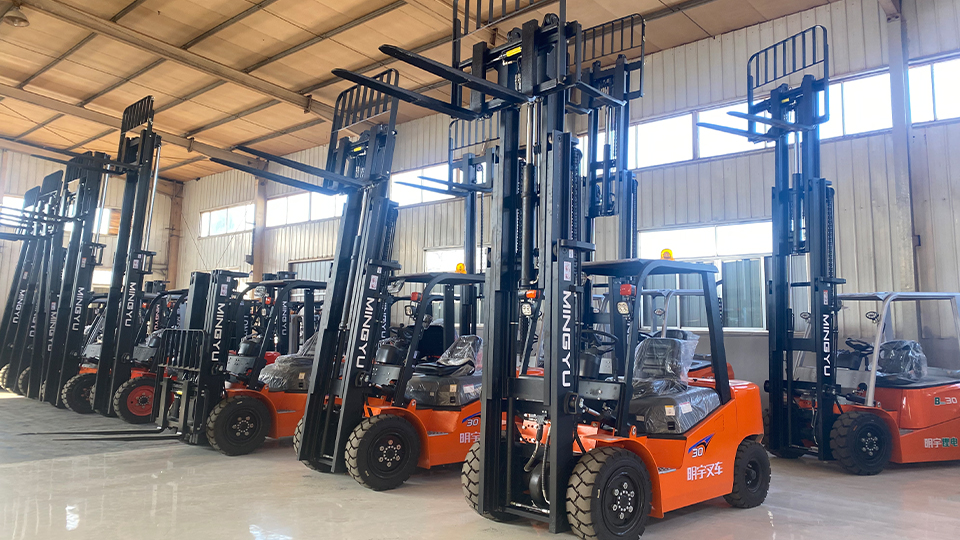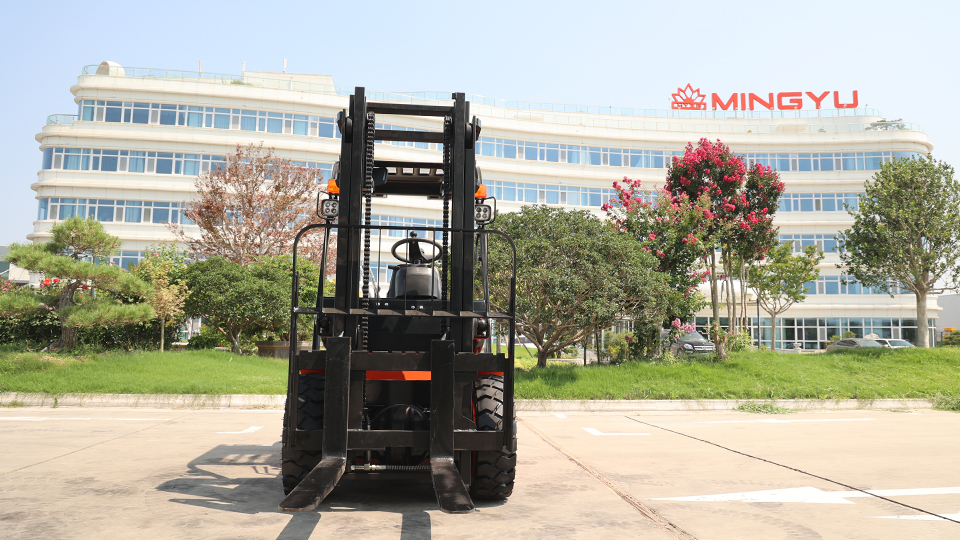
Technical Article Outline: How to Get Forklift Certification (Core Content)
The full article would expand each of these points into several paragraphs of detailed, technical explanation, citing OSHA standards, equipment mechanics, and best practices.
1. Introduction: The Necessity of Certification
The stakes: Why certification isn't optional (it's the law).
Key Regulation: Introduction to OSHA Standard 29 CFR 1910.178 (Powered Industrial Trucks). This is the foundational technical reference.
The 'Why' for the Employer: Reducing liability, preventing workplace injuries, and protecting assets.
2. Prerequisites and Personal Readiness
Age and Legal Requirements: Typically 18 years old in the US.
Physical and Mental Fitness: The need for good vision, hearing, depth perception, and stable motor skills. Discussion of employer medical evaluations.
Understanding the Environment: Recognizing the risks of loading docks, ramps, tight aisles, and pedestrian traffic.

3. The Two Core Components of OSHA-Compliant Training
The training must have both of these elements:
A. Formal Instruction (The Classroom/Online Theory)
Technical Subjects Covered:
Truck-Related Topics: Vehicle capacity and stability (the "stability triangle/trapezoid" ), operating limitations, warning devices, inspections (pre-shift checks), and maintenance requirements.
Workplace-Related Topics: Surface conditions, load handling, stacking, maneuvering, clearance, and pedestrian safety rules.
Regulatory Topics: Detailed review of OSHA’s specific requirements.
Delivery Methods: In-person classroom, video, online/computer-based (CBT).
B. Practical Training and Evaluation (The Hands-On Segment)
The Equipment: Training must be conducted on the specific type of truck the operator will use (e.g., counterbalanced, reach, order picker, rough terrain). Certification is truck-specific!
Maneuvers to Master:
Starting, stopping, steering, and maneuvering through an obstacle course.
Hydraulic controls (raising/lowering/tilting).
Picking up, moving, and stacking different loads.
Handling hazards (e.g., operating near edge of a ramp/dock).
The Final Evaluation: A qualified person must observe the operator performing the required tasks safely and competently in the workplace environment.
4. Who Provides the Training? (Sources of Certification)
Employer-Provided Training: This is the most common and often the best, as it is tailored to the specific equipment and environment of the job site.
Vocational Schools/Technical Centers: Provide general certification before employment.
Third-Party Safety Consultants: Often brought in by companies for specialized training and certification.
5. Maintaining Certification: Recertification and Refresher Training
The Three-Year Rule: Operators must be evaluated at least once every three years.
"Trigger" Events for Immediate Refresher Training:
Unsafe operation/near-miss incidents.
Accident involvement.
A performance evaluation shows a deficiency.
Introduction to a different type of equipment or change in workplace conditions.
Documentation Requirement: The employer must keep records of all initial training, evaluations, and refresher training, including the operator's name, training date, and the identity of the person performing the training/evaluation.
6. Conclusion: Certification is a Commitment to Safety
Reiterate that certification is not a one-time event but an ongoing commitment.
The certified operator is the first line of defense against material handling hazards.
This outline provides the structure, the necessary technical terms (OSHA 29 CFR 1910.178, stability triangle, refresher training triggers), and the scope for a professional 2,000-word article.
Would you like me to focus on one of these sections to draft a detailed, technical few paragraphs, perhaps on the OSHA requirements for refresher training or the mechanics of the stability triangle, to help kick off your writing? That's an impressive technical deep dive! Since you're looking to write a 2,000-word technical article, let's elaborate on one of the most critical and complex sections: The mechanics of stability and the specific OSHA requirements for refresher training.
This level of detail will give your article the necessary technical "meat" to meet your goal.
��️ Technical Deep Dive: Stability and Compliance
Sub-Section: The Physics of Safety—Understanding the Stability Triangle
A forklift is inherently unstable by design, which is why certification places such a heavy emphasis on physics. Unlike an automobile, a counterbalanced lift truck utilizes a three-point suspension system, creating a virtual boundary known as the Stability Triangle.
The Geometry: This imaginary triangle is defined by the two points at the center of the front (load-bearing) wheels and the single, central pivot point of the rear (steering) axle. The key to safe operation is ensuring the Combined Center of Gravity (CCG)—which includes the weight of the truck, the operator, and the load—remains within this triangular footprint.
Longitudinal Stability (Tipping Forward/Backward): This is controlled by the front boundary of the triangle. As a load is lifted or as its weight shifts forward (e.g., during sudden braking), the CCG moves closer to the front axle. Exceeding the truck's rated capacity or having a load center that is too far out pushes the CCG beyond the front boundary, resulting in a forward tip-over. The truck's counterweight (the heavy rear section) is the primary engineering feature that counteracts this force, balancing the machine like a high-tech seesaw.
Lateral Stability (Tipping Sideways): This is controlled by the side boundaries. Lateral tip-overs are common and are caused by dynamic forces:
Turning while elevated: The centrifugal force generated by a sharp turn pushes the CCG sideways, forcing it outside the boundary. This is why OSHA mandates loads must be kept as low as possible (typically 4-6 inches from the floor) while traveling.

Driving on an incline/decline across the slope.
Uneven load distribution.
A truly technical article should also briefly mention the Stability Pyramid, which is the three-dimensional, tapering shape that illustrates how the safe operating area shrinks as a load is lifted higher.
Sub-Section: The Mandates of Recertification and Refresher Training (OSHA Standard 29 CFR 1910.178(l)(4))
Certification is not a lifetime license but a commitment to ongoing competence. While a performance evaluation is mandated at least once every three years, refresher training is legally required sooner under specific "trigger events." This is a crucial distinction for your article.
Refresher training, which includes both formal instruction and a performance evaluation, must be provided in the relevant topics when:
Unsafe Operation: The operator is observed operating the powered industrial truck in an unsafe manner.
Involvement in Incidents: The operator is involved in an accident or a near-miss incident. This is non-negotiable—any close call triggers mandatory retraining.
Deficient Evaluation: An evaluation reveals that the operator is not operating the truck safely (even if it's the routine 3-year evaluation).
Change in Equipment Type: The operator is assigned to drive a different type of truck (e.g., moving from a Class 4 Internal Combustion to a Class 2 Narrow Aisle truck). Training is required for the new equipment's unique operational characteristics.
Change in Workplace Conditions: A condition in the workplace changes in a manner that could affect the safe operation of the truck (e.g., a new rack system is installed, a new loading dock configuration is implemented, or a different process for handling hazardous materials is introduced).
The employer is solely responsible for certifying that the operator has received and successfully completed this training and evaluation, and must maintain meticulous records, including the operator's name, training date, evaluation date, and the identity of the person(s) who performed the training or evaluation.
Name: selena
Mobile:+86-13176910558
Tel:+86-0535-2090977
Whatsapp:8613181602336
Email:vip@mingyuforklift.com
Add:Xiaqiu Town, Laizhou, Yantai City, Shandong Province, China